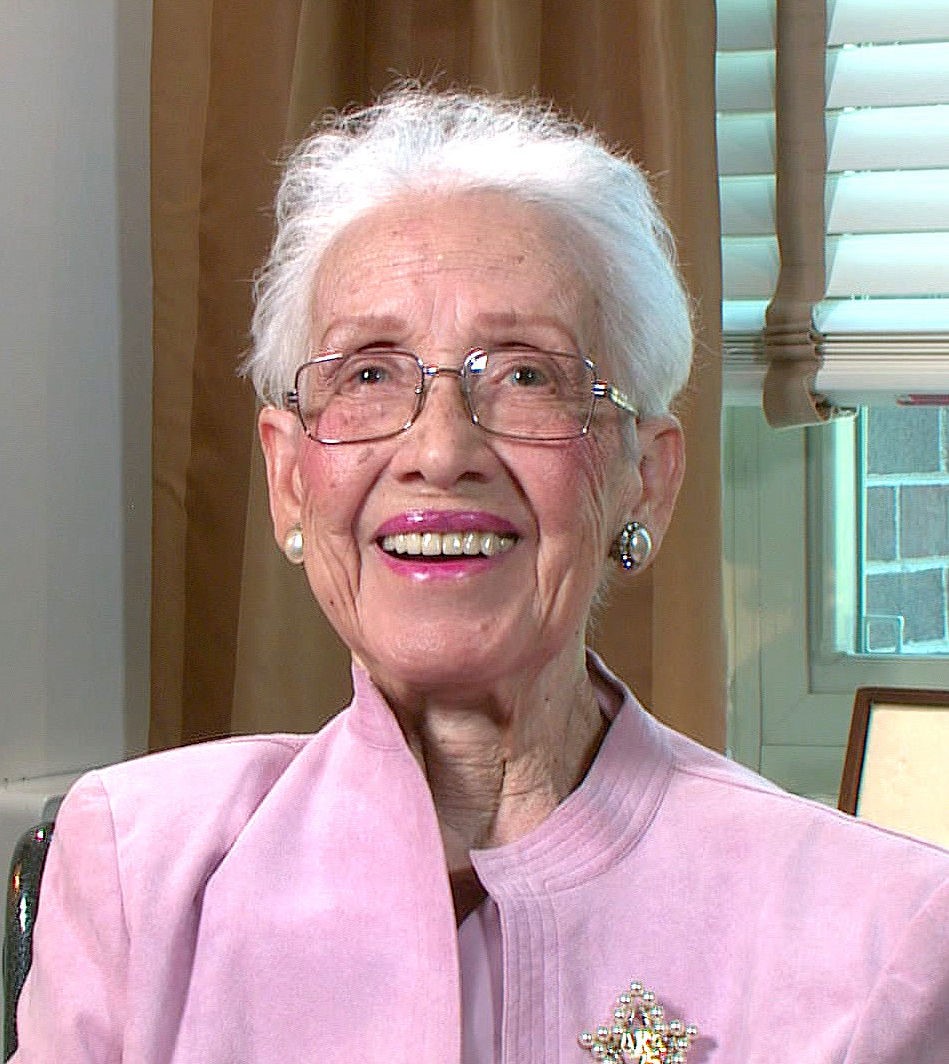Year Inducted: 2017

- First African-American woman to desegregate the graduate program at West Virginia State (University) at the age of 18
- Applied mathematical skills after graduate school and became a “computer” for the National Advisory Committee on Aeronautics (NASA today) in the furtherance of the progression of flight
- Earned an unprecedented seat among the engineers of the all-male flight research team due to her accuracy and brilliance in complex mathematical concepts
- Became a valued member of the Langley Space Task Group, credited with calculating the trajectories, launch windows, and emergency back-up return paths for Project Mercury’s 1961 launch and the 1962 first American-manned orbit of the earth
- Played an integral role in the Apollo 11 lunar landing as well as Apollo 13’s aborted mission to the moon, where her expertise was vital in bringing the crew safely back to earth
- Awarded the distinguished Presidential Medal of Freedom in 2015
- Katherine G. Johnson Computational Research Facility opened at NASA’s Langley Research Center in 2016
- Portrayed in the 2016 film, Hidden Figures, based on the book of the same name
Born in White Sulphur Springs, West Virginia, on August 26, 1918, Katherine Johnson would go on to contribute her talents to space exploration.
Graduating high school at the age of 14, Johnson went on to attend West Virginia State College (now West Virginia State University), majoring in French and Mathematics before graduating summa cum laude at the age of 18. Her education continued when she enrolled in graduate school at West Virginia University and became the first African-American woman to desegregate the program.
Beginning in the 1950’s, Johnson applied her mathematical skills and became a “computer” for the National Advisory Committee on Aeronautics. She analyzed data from black boxes and studied topics such as gust alleviation for aircraft in the furtherance of the progression of flight. While both racial and gender segregation were prevalent at the Langley Memorial Aeronautical Laboratory where she worked, her accuracy and brilliance in complex mathematical concepts earned her an unprecedented seat among the engineers of the all-male flight research team. When the National Aeronautics and Space Administration (NASA) was created in 1958, Johnson became a valued member of the Langley Space Task Group.
Johnson is credited with calculating the trajectories, launch windows, and emergency back-up return paths for Project Mercury’s 1961 launch and the 1962 first American manned orbit of the earth. Her abilities were so well-regarded, John Glenn requested that Johnson double-check the computer calculations by hand to ensure the new machine’s calculations were correct before his 1962 manned orbit. Her contributions continued through to the Apollo 11 lunar landing as well as Apollo 13’s aborted mission to the moon, where her work was vital in bringing the crew safely back to earth. She retired in 1986.
Her awards and accolades include six Langley Research Center Special Achievement awards, a 1967 NASA Lunar Orbiter Spacecraft and Operations team award, and a 40,000-square foot building dedicated in her honor at the Langley Research Center. In 2015, President Obama bestowed upon her the Presidential Medal of Freedom, the highest civilian honor.
The state of West Virginia is proud to honor Katherine Johnson’s contributions to the advancement of aviation.